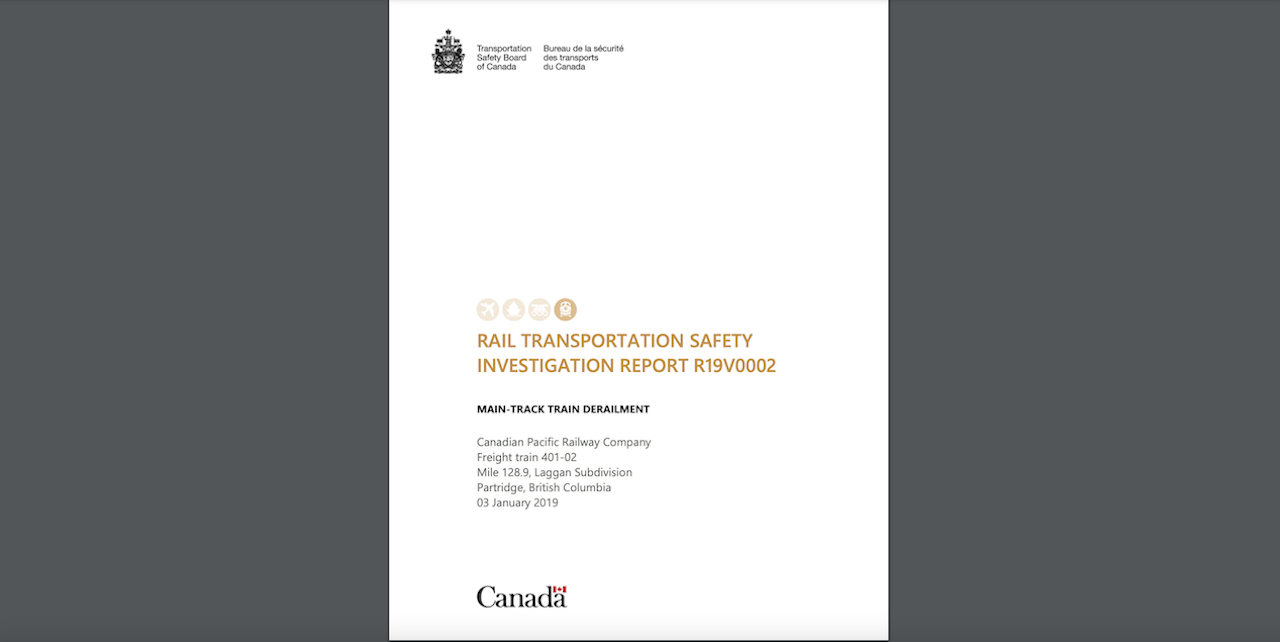
Canada TSB: UDR Led to 2019 CP Train Derailment
Written by Carolina Worrell, Senior Editor
The Transportation Safety Board of Canada (TSB) on July 19 released its investigation report into the January 2019 Canadian Pacific (CP) freight train derailment in the Upper Spiral Tunnel, near Field, British Columbia (BC), citing the undesired release of air brakes (UDR) as the cause.
On the morning of January 3, 2019, a mixed-merchandise CP (now CPKC) freight train, hauling 159 rail cars, including 13 carrying dangerous goods, departed Calgary, Alberta, destined for Port Coquitlam, BC. According to TSB, while descending Field Hill, a section of track known for its steep grades and sharp curves, “an in-cab alert activated as the front end of the train was exiting the Upper Spiral Tunnel, indicating a train-initiated UDR,” which occurs when the air pressure in a train’s brake pipe spontaneously increases, causing the automatic release of the air brakes.
In response, the locomotive engineer “made a full-service brake application, as required by operating rules, and applied the locomotive dynamic brakes to bring the train to a controlled stop,” according to the report (download below). The subsequent rapid deceleration, TSB says, “resulted in the block of heavy loaded cars at the tail end of the train running into the empty cars near the center, leading to the derailment of 15 empty cars in the Upper Spiral Tunnel.”
In this occurrence, the train had been assembled using destination marshalling—meaning cars were grouped in blocks destined for the same location, according to TSB. Therefore, according to the report, several heavy loaded cars were placed at the rear end of the train in preparation for the first stop in Golden, BC.
According to TSB, the investigation revealed that, “although the train cleared CP’s computer-based train marshalling verification program before departing, it was not compliant with the railway’s General Operating Instructions, which states that heavy cars must be placed as close as possible to the head of the train and light cars should be placed as close as possible to the rear unless the cars behind them are also relatively light.”
Additionally, TSB’s investigation also found that the train had experienced an earlier UDR six hours prior to the occurrence, “yet a decision to proceed was made without an alternative plan of action.” The decision to proceed after the first UDR, TSB says, “likely did not take into consideration the risks associated with potential high in-train forces should another UDR occur, especially on the steep descending grade and sharp curves of Field Hill.”
Following this occurrence, CP issued a maintenance alert to inspect certain rail cars and make necessary repairs and conducted an extensive review and analysis of mixed-merchandise train make-ups operating west of Calgary. The Class I also issued an operating bulletin concerning restrictions for handling mid-train empty cars on westward trains.



